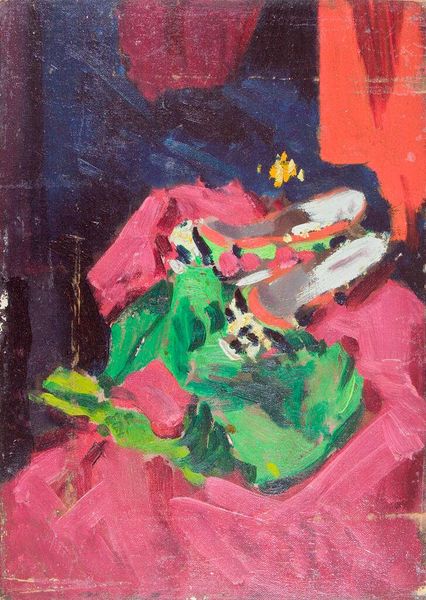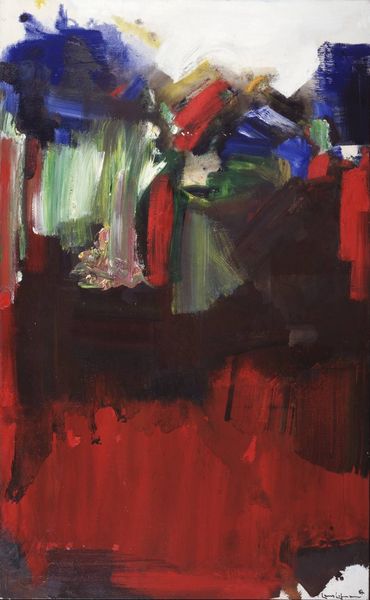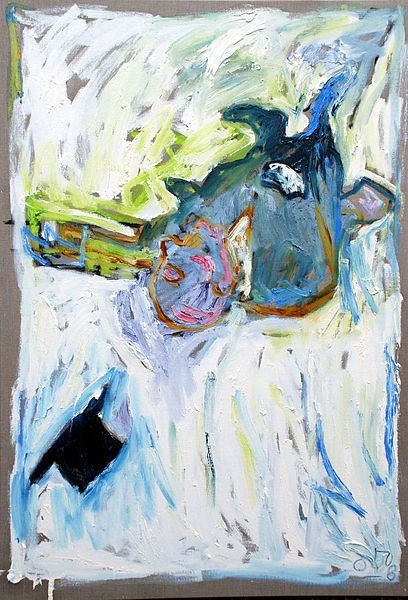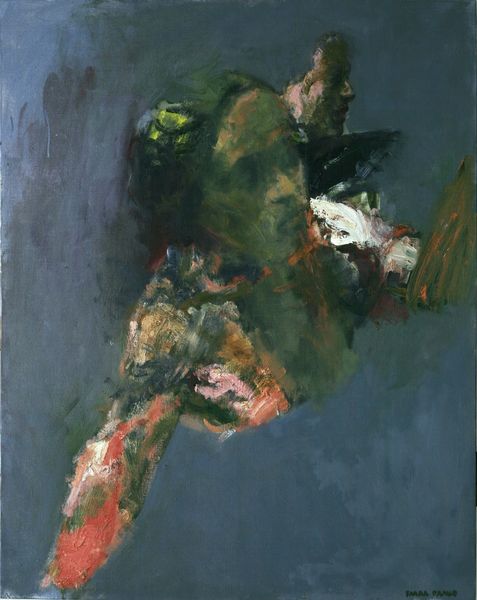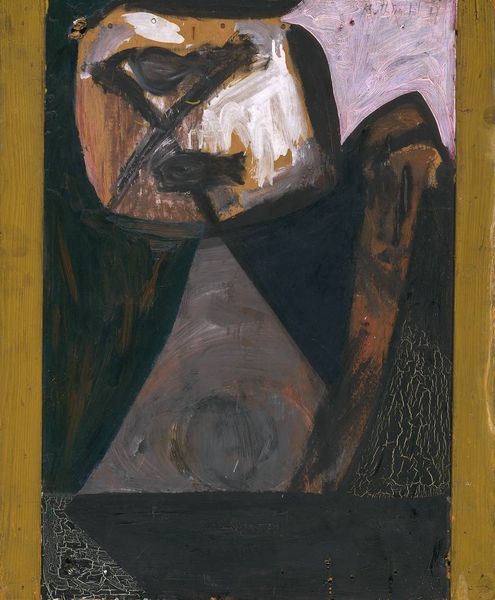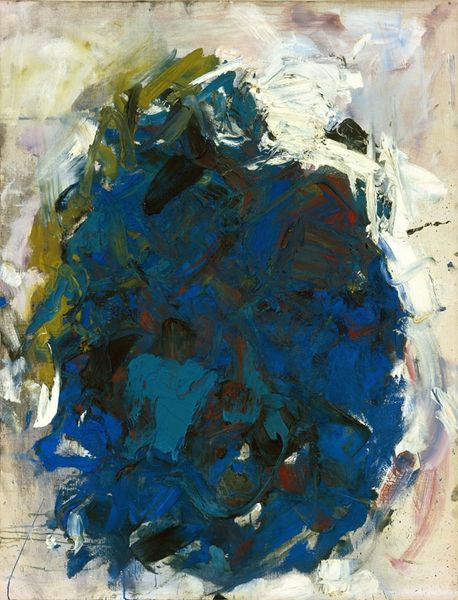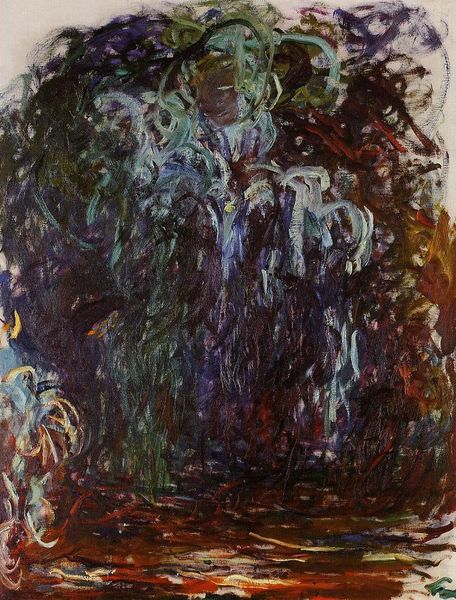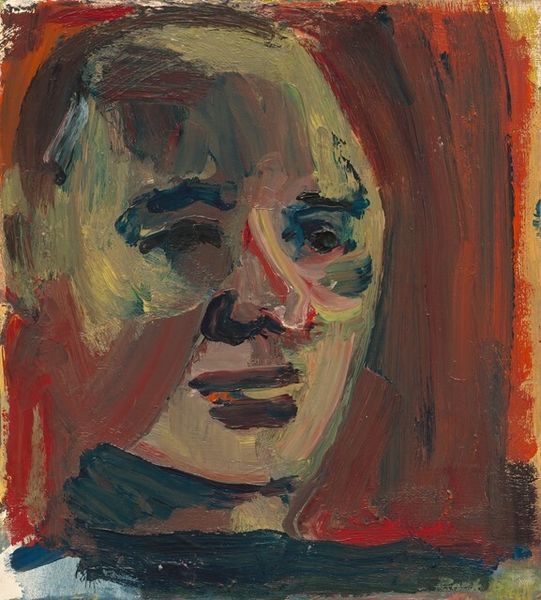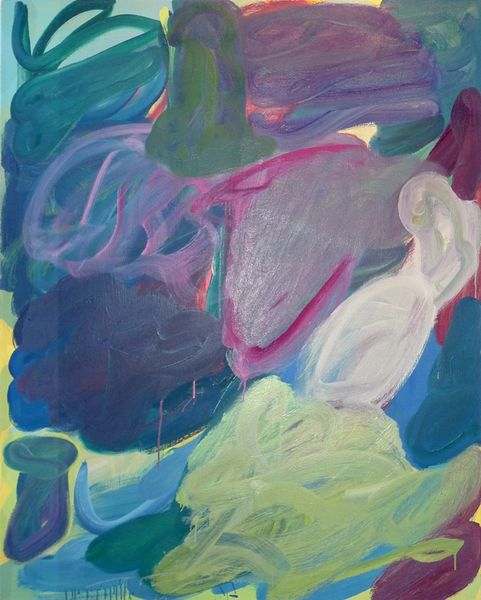
Copyright: Vlada Ralko,Fair Use
Curator: I'm drawn to the almost ghostly quality of this work, that, I feel, exudes this strong sentiment. Editor: And I immediately read a kind of veiled trauma in Vlada Ralko’s 2006 oil painting, "Favorite Fountain." The colors feel muted, almost bruised, conveying a sense of unease. Curator: It’s a figurative piece, definitely evocative. To me the layers, those washes of color and obscured forms, suggest a palimpsest. Editor: Absolutely. A palimpsest of memory, perhaps? The figure, barely discernible, feels weighed down, constrained. Notice how the fountain motif itself—usually associated with abundance and life—is rendered here as a crumbling, melancholic form. Curator: Yes, there's a powerful dissonance. The title "Favorite Fountain" implies a treasured object, yet it's depicted with such visible… distress. The fountain as a cultural symbol often represents cleansing, purification, or even a source of vitality, doesn’t it? Editor: Indeed. And here, Ralko seems to invert that symbolism, pointing to a history—a personal history, a cultural history—that is burdened, perhaps toxic. The way the paint seems to drip and dissolve adds to that feeling of disintegration. What sociopolitical narratives are submerged, and need acknowledgement? Curator: I notice that the composition draws my eye upward. The central pink form that resembles the upper part of the fountain is repeated. Editor: What kind of repeating pattern do you sense, that might offer an entrance into its iconographic matrix? Curator: Repetition and mirroring is common in religious icon painting. The way I see it, those repetitive forms guide the viewers toward an introspective meditation on the image, on its possible underlying meanings. Editor: Right, because the distorted forms refuse any easy consumption, encouraging us to confront that feeling of displacement. It reminds me of how contemporary Ukrainian artists address themes of national identity and loss through the lens of personal experience. Curator: It feels heavy, laden. Editor: Precisely. Art that challenges our perceptions, and compels us to see beyond the surface—the trauma, the weight. Curator: Yes, perhaps art making a way to acknowledge difficult parts of the cultural psyche. Editor: Or individual memory struggling towards the surface of representation. Powerful work.
Comments
No comments
Be the first to comment and join the conversation on the ultimate creative platform.
